#greek cuisine
Photo

A cover photo from the Greek culinary magazine “Γαστρονόμος” (=Gastronome). featuring old traditional recipes from rural Attica. The photo was taken by Michael Pappas.
#greece#tradition#culture#traditional clothing#folk clothing#traditional dress#folk dress#historical fashion#arvanite clothing#food#pie#greek culture#greek cuisine#large
560 notes
·
View notes
Photo

Sheet pan chicken gyros with feta tzatziki
#chicken#gyros#fries#chicken gyros#food#feta#tzatziki#greek food#greek cuisine#french fries#pita#dinner#sandwich#tasty#foodporn#delicious#cooking#food photography#foodgasm#recipe
2K notes
·
View notes
Text

Seitan Souvlaki with Roasted Veggies & Tzatziki Sauce (Vegan)
#vegan#street food#greek cuisine#skewers#souvlaki#veganized#diy#seitan#roasted vegetables#bell peppers#zucchini#red onion#dill#vital wheat gluten#tofu#nutritional yeast#sage#thyme#onion powder#garlic powder#vegan yogurt#parsley#garlic#lemon#tomatoes#olive oil#black pepper#flatbread#dips#recipe is removed...but it's still good inspo
363 notes
·
View notes
Text
#that's a nice type of categorisation#tourism#modern greece#tavern#greek cuisine#restaurant#food#foodie
29 notes
·
View notes
Text

Kotopoulo Lemonato in the making 🇬🇷
#kotopoulo lemonato#lemon chicken#greek food#love Greece#greece#coocking#gay photographer#comfort food#greek cuisine
50 notes
·
View notes
Photo

Milos, Greece 🇬🇷
IG: lavieestgrecque
#milos#greece#greek island#greek islands#sea#octopus#greek food#milos island#vacay#vacation#summer#mediterranean#greek aesthetic#hellas#cyclades#cyclades islands#greek cuisine#mediterranean cuisine#aegean#aegean sea#seafood
94 notes
·
View notes
Text
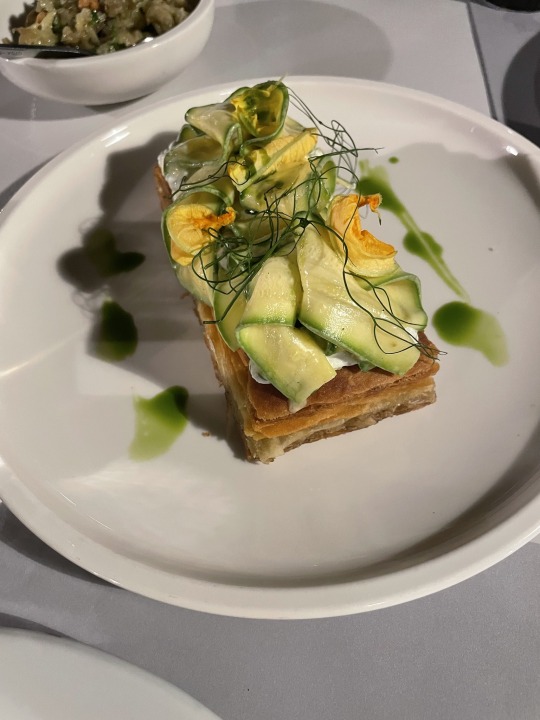

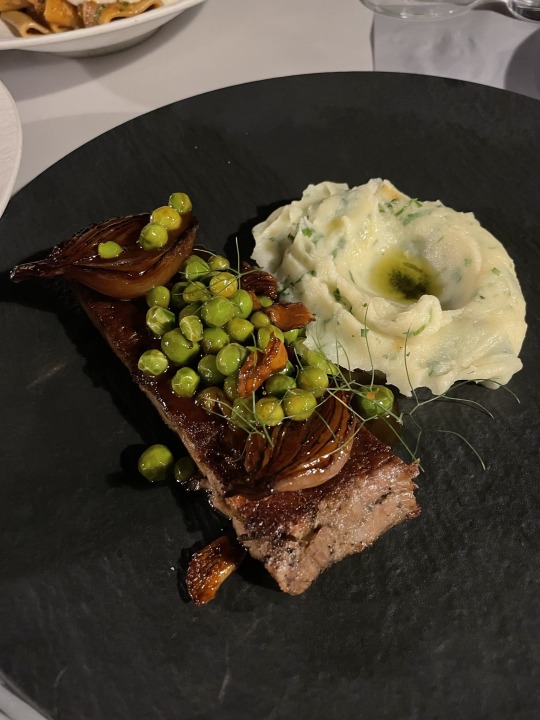

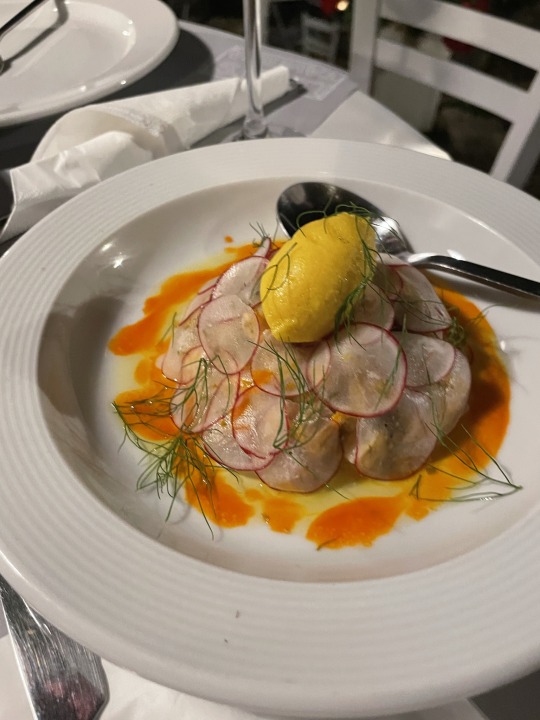

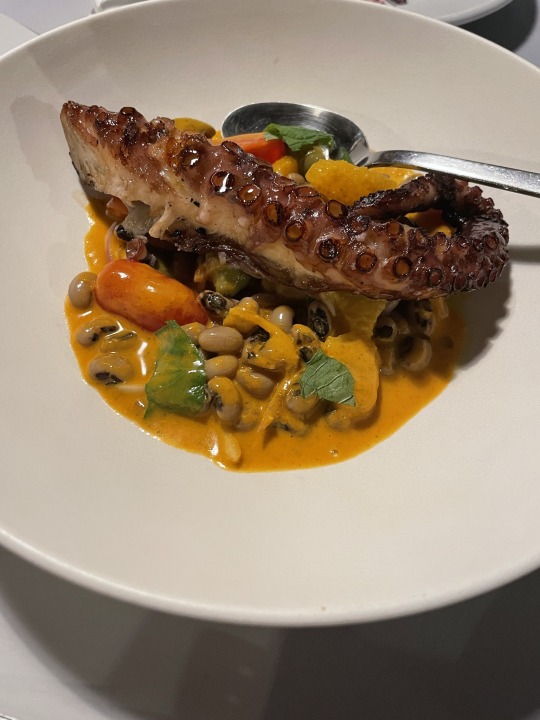
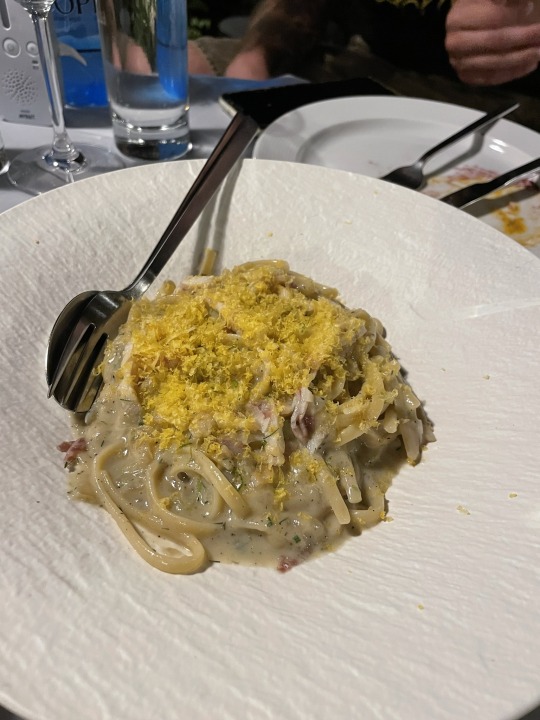
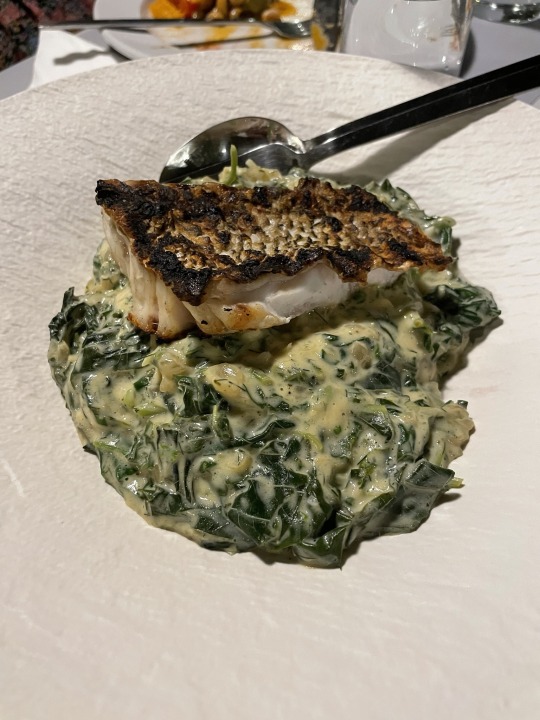
Some of Lela’s Taverna amazing recipes selection
Kardamyli, Greece (June 2023)
50 notes
·
View notes
Text





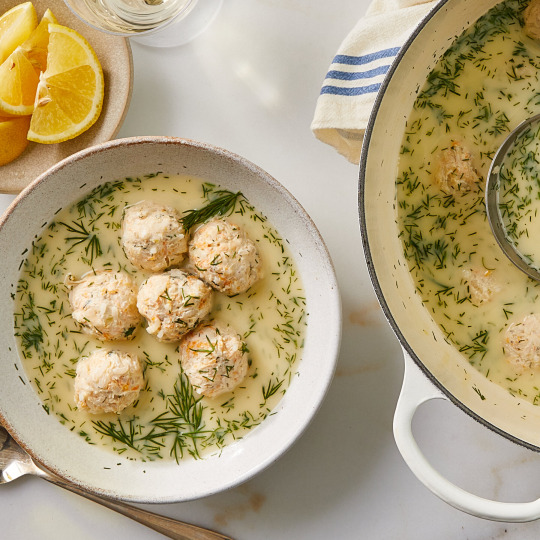
Youvarlakia
18 notes
·
View notes
Text

I made koulourakia for Easter which I am informed are Greek Easter biscuits?
There is a claim that the shape of these biscuits goes back to Minoan times but I didn't find any evidence for this aside from a fresco showing round shapes in a basket that are also interpreted as fruit. Also, I am always doubtful of claims of continuous traditions, even though I am sure the Minoans had their own versions of cakes and biscuits.
I used this recipe:
250 g butter
250 g sugar
13 g baking ammonium
130 ml lukewarm milk
4 eggs
1 tsp ground vanilla
Zest of 1 big or 2 small oranges
1 kg white flour
2 egg yolks + 1 tbsp of water for the eggwash glaze
Remove the butter from the fridge and cut into pieces so it more quickly reaches room temperature.
Mix the butter and sugar for about 10-15 minutes, until the butter is creamy and fluffy.
In the meantime, heat up the milk until it is lukewarm, then remove the pot from the heat. Add the ammonia and whisk until fully dissolved. Set aside.
Add the eggs one at a time to the sugar-butter-mixture, allowing time for each one to be absorbed, before adding another. Then add the the vanilla, the orange zest and the ammonia milk and blend well. Finally, combine with the flour, a table spoon at a time, until the dough is soft and not too sticky.
Cover the dough and let it rest for 30 minutes.
Shape the koulourakia with your hands, giving them any shape you like: Just pinch off a small ball of the dough (approx. 3 cm in diameter) and roll it into a rope. Twist them into braids, fold them into a vulva boat, roll them into an S or into a spiral: the sky is the limit.
Line a large baking tray with parchment paper and place the koulourakia on it, leaving some distance between them as they will rise a lot while baking. It will take 4-5 baking trays to bake them all.
Whisk the egg yolks and 1 tbsp of water in a small bowl and brush the top of the koulourakia for a beautiful glaze.
Bake in a preheated oven at 200°C/400°F using the hot air fan for 12-20 minutes (depending on your oven), until fully cooked and golden brown on the outside.
Enjoy!!! ☕
47 notes
·
View notes
Text

The popular gastronomic guide Taste Atlas has ranked the best national cuisines in 2022. The TOP was formed based on the results of a survey of travelers who voted for food and drinks.
In total, the ranking includes 95 cuisines of the world. Topped the ranking of Italian cuisine
TOP 10 looks like this:
* Italian Cuisine
* Greek cuisine
* Spanish cuisine
* Japanese food
* Indian kitchen
* Mexican cuisine
* Turkish cuisine
* American cuisine
* French cuisine
* Peruvian cuisine
Least of all travelers liked the national cuisines of Latvia (93) - 😩😫😢, Morocco (94th place) and Norway (95th place).
#tumovs#wkwgroup#тумовс#rtumovs#reinis tumovs#cuisine#food#mexican#italia#greek cuisine#italian cuisine#Spanish cuisine#turkish cuisine#japanese cuisine#american cuisine#french cuisine#peruvian cuisine#latvian
43 notes
·
View notes
Text
#Greece yacht rental#Yacht Rentals Greece#Greece yachts#Ionian Islands#Crete#Athens Riviera#Sporades Islands#Greek Islands#Greece superyachts#Greek cuisine#private yacht rental
2 notes
·
View notes
Text

Guys we finally have a winner in the eternal battle...

#greece#funny#shitpost#meme#the fact that even in a world list Athens and Thessaloniki are fighting it out with each other is hilarious#okay i mean technically heraklion has the same rating as athens but let's ignore this#that 0.01 deficit to Thessaloniki can start a civil war#also some credit to chania being also in the list#heraklion#athens#thessaloniki#chania#crete#attica#sterea hellas#central greece#macedonia#greek cuisine#mainland#greek islands
151 notes
·
View notes
Photo
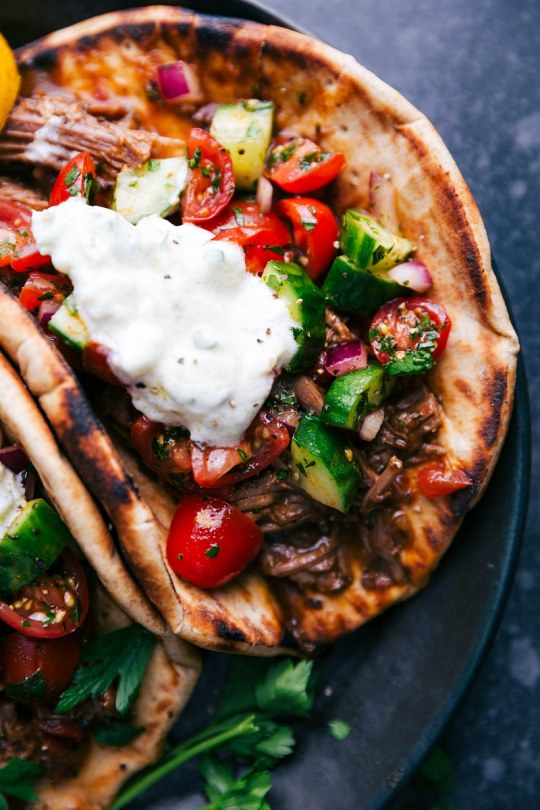
Beef gyros
#gyros#beef#tzatziki#beef gyros#food#greek food#greek cuisine#pita#pita bread#tomatoes#cucumber#shredded beef#red onion#main course#foodporn#delicious#cooking#food photography#foodgasm#recipes
1K notes
·
View notes
Text

Briami / Greek Vegetable Bake (Vegan & Gluten-Free)
#vegan#gluten free#briami#dinner#tray bake#greek cuisine#mediterrian cuisine#roasted vegetables#zucchini#tomatoes#carrots#bell peppers#eggplant#potato#red onion#garlic#parsley#thyme#oregano#tomato sauce#olive oil#eat the rainbow
207 notes
·
View notes
Note
Hello. As a Greek-American that was lucky enough to spend a lot of time in Greece, whenever I think of a greek gyro, I think of a pork gyro with a distinct texture to the meat. Meanwhile here in the U.S., either because of ease of mass production or some other reason, doner kebab type meat (ground lamb and beef) is served in "Greek gyros". I asked my uncle about the reasoning Greek gyros were poorly translated/not representative of the usual dish and he explained it was because the doner kebab was popular in western Europe, then branched to the U.S. from there. Whenever I try to look up some kind of dialogue around the topic, especially in regards to why 95%+ of Greek restaurants serve it, I don't come up with much I feel like. Do you have any enlightenment of what changed or influenced Greek-Americans to serve non-tranditional gyros?
Also, unpopular opinion maybe but Greek food in the U.S. a majority of the time is not good. I lived many years relative to Tarpon Springs and would often try the food while also having a lot of exposure to actual Greek food in Greece, and it was... I don't want to be rude. But it's the greatest disappointment to struggle to find good Greek food when you miss it so much :'( I've lived in many other states too and I've found one place in Chicago I know of that serves pork gyros so far. One restaurant in Tarpon I'll admit impressed me and my grandfather with some dishes, but they changed management by the time I went again and they served the mousaka with marinara splashed on the plate.
Sorry for getting a little ranty, but I just do not see Greek-Americans talk about this and hoped you had some ideas/thoughts.
Greek dishes and menus from the US and Canada can legit scare me 😂😂 The marinara on the side....??? 😭
For why the dishes change, I can only speculate, based on what I've seen. I've seen that ethnic restaurants often adapt to the local taste buds. I suspect most Greeks, desperate to gain money in the US, would adapt to make their food appealing to the locals and the local minorities who are not allowed to eat pork - the last addition is for the gyros meat. Maybe as the generations pass, the younger members change the dishes according to what's popular in the area.
More for gyros: Perhaps lamb and beef was the meat mostly available to them - maybe because Judaists or Muslims were already in the area and buying a lot - so they could get it easily and cheap. And then maybe it stuck, because people came know the Greek version as such.
10 notes
·
View notes
Text
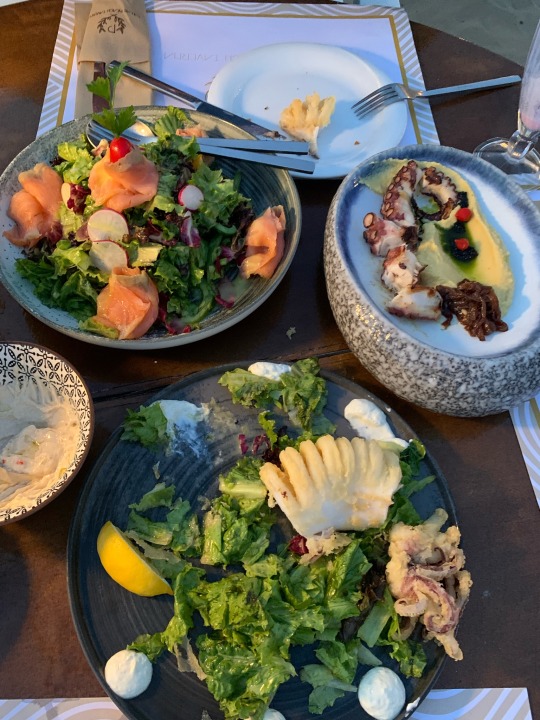
Greek cusine
#greek cuisine#travel photo blog#travel photography#vacation#photoblog#island#greece#hellas#greek island#tummy#lindo#lindos#pallas beach tavern#rodos#rhodes
2 notes
·
View notes